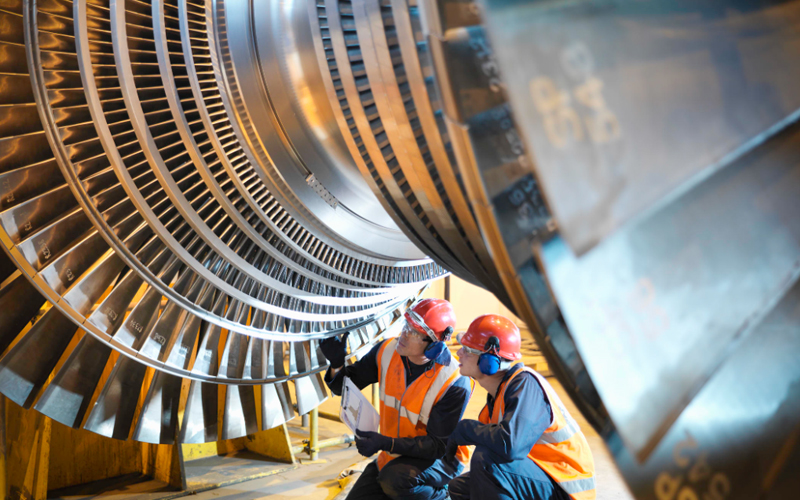Unforeseen equipment failures can bring production to a standstill, forcing managers into overdrive as they face missed deadlines and delayed deliveries. The domino effect of such disruptions includes potential stockouts, excess inventory, lost revenue, increased maintenance costs and safety concerns from malfunctioning equipment.
The root cause? An outdated approach to keeping things running. We have been stuck in a cycle of reactive maintenance when we fix things when they break, and corrective maintenance when we patch them up when they start to sputter. Even preventive maintenance, with its scheduled checkups, is not foolproof. The issue is that each machine requires specific care for optimum performance, but traditional methods treat every machine the same way, like prescribing the same medication for everyone regardless of their specific illness.
There is a better way. A way to move beyond reacting to breakdowns and towards preventing them altogether. Embrace machine learning predictive analytics and predictive maintenance AI. These technologies help prevent equipment failure through two key approaches:
- Condition-based maintenance(CBM): Monitors equipment health in real-time and schedules maintenance when data exceeds preset thresholds such as vibration, temperature etc.
- Predictive maintenance (PdM): Analyses historical data in addition to real-time readings to predict potential failures before they occur, thereby allowing for proactive maintenance and minimum downtime.
This blog delves into the world of predictive maintenance, the most advanced weapon in our arsenal against production disruptions.
How AI and ML enhance predictive maintenance
While the concept of predictive maintenance (PdM) surfaced in the 1990s, its widespread adoption has only recently gained momentum, thanks to the emergence of Internet of Things (IoT), artificial iIntelligence (AI) and machine learning (ML). These technologies combine their powerful data logging, processing and learning capabilities and enable you to extract meaningful insights and predict future failures with remarkable accuracy. Here is how they do that:
- Data collection and analysis
- Pattern recognition and anomaly detection
- Predictive failure forecasting
IoT sensors embedded in machinery continuously collect data on various parameters like vibration, temperature, energy consumption and performance metrics. This vast amount of data creates a real-time fingerprint of the equipment's health, allowing AI and ML algorithms to identify even subtle changes that might foreshadow future problems.
The algorithms learn the ‘normal’ operating behaviour of each machine based on historical data. Deviations from these normal patterns signal potential equipment issues, prompting further investigation or targeted maintenance.
By analysing anomalies and historical failure data, AI can predict component failures in advance, allowing for scheduled maintenance to prevent breakdowns, minimise downtime and avoid extensive damage.
Take welding robots on the car assembly line, for example. Using IoT predictive maintenance, you can track everything from the force exerted during welds to the sound produced and surrounding temperatures.
By analysing this real-time data with ML predictive analytics, AI can identify even the subtlest deviations – a slight increase in vibration, a change in the characteristic ‘ping’ of a perfect weld or an unexpected rise in temperature. These anomalies become early warnings of potential problems like tool wear or misalignment.
By factoring in historical data of past failures, AI can predict with remarkable accuracy when a component is likely to fail. This allows you to schedule maintenance proactively, preventing costly downtime and ensuring consistent weld quality.
Benefits of enhanced predictive maintenance
This shift from reactive to proactive maintenance is a game-changer. Here is how this shift is benefitting manufacturing facilities:
- Reduced downtime: AI-powered PdM minimises downtime by identifying equipment issues before they escalate into major failures. Studies show facilities with a well-functioning PdM program can experience a 35-45 per cent reduction in downtime, leading to smoother production and potentially a 20-25 per cent increase in output.
- Extended equipment life and optimised maintenance costs: Early detection of problems allows for targeted maintenance interventions. This extends the lifespan of valuable machinery by preventing minor issues from becoming major breakdowns. PdM also helps optimise maintenance costs by focusing resources on components that truly need attention and avoiding unnecessary repairs. Studies suggest that predictive maintenance holds the potential to reduce costs by 8-12 per cent compared to traditional methods. Facilities heavily reliant on reactive maintenance strategies could see even greater savings, potentially reaching 30-40 per cent or more.
- Enhanced workplace safety: PdM proactively identifies potential equipment malfunctions, preventing safety hazards in the workplace. This minimises accidents caused by equipment failure, promoting workplace safety.
The General Motors (GM) case is an inspiration. By adopting PdM, GM has achieved a remarkable 15 per cent reduction in unexpected downtime. This improvement translates to substantial cost savings, with an estimated $20 million saved annually in maintenance expenses.
Predictive future, preventive power
AI and ML are propelling a revolution in how manufacturers approach equipment maintenance. As machine learning predictive analytics and predictive maintenance AI continue to evolve, we can expect even more sophisticated capabilities ushering in a new era of intelligent and data-driven maintenance practices. The future of manufacturing is no longer about scrambling to fix breakdowns; it is about predicting and preventing them altogether, with the potential for even more significant efficiency gains and cost reductions.
How can Infosys BPM help?
Manufacturing is undergoing a revolution, and at the heart of it is the power of data. Our Manufacturing BPO Services has a transformative power that combines industry expertise with cutting-edge data analytics. Stop reacting to issues, start getting ahead of them. Are you ready to embrace the future of manufacturing?







